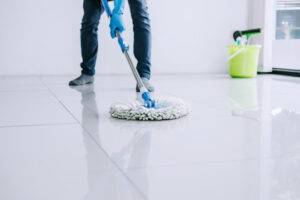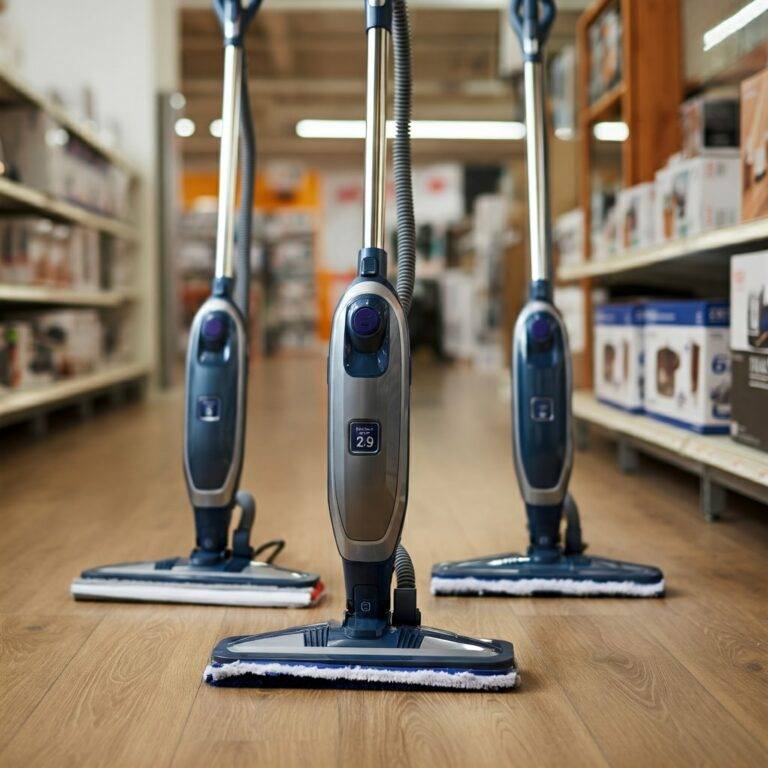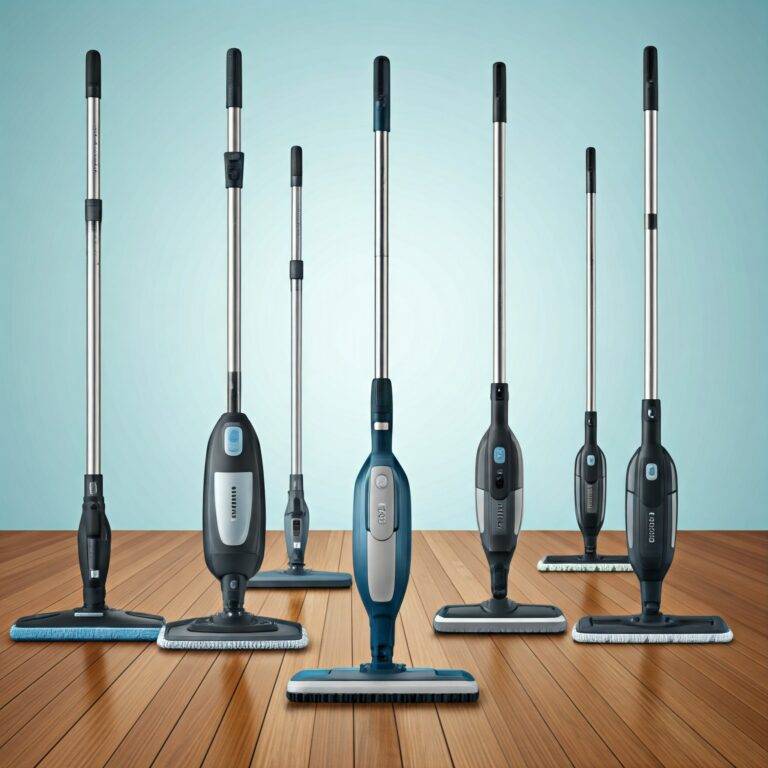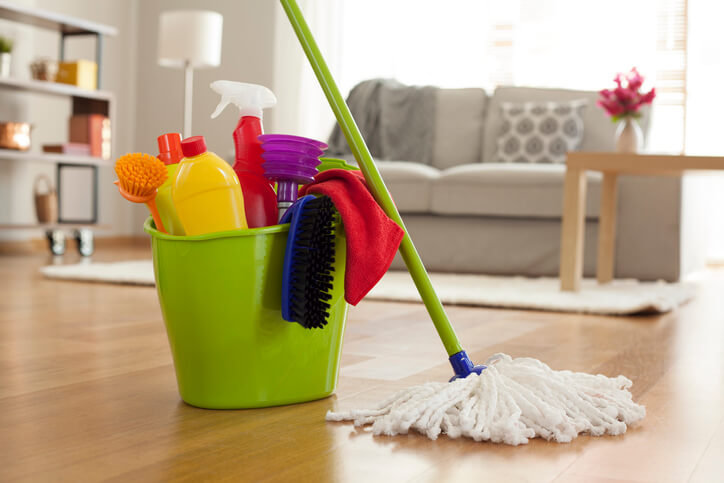Welcome to your comprehensive hardwood cleaning guide! In this article, we delve into the best practices for how to deep clean hardwood floors, ensuring they maintain their stunning appearance for years to come. While routine cleaning is a must, it’s the deep cleaning that can truly preserve the vibrancy and artistic integrity of your hardwood floors, keeping them as captivating features of your home1. Dust and dirt can accumulate over time, making it essential to implement a proactive approach to hardwood floor maintenance2. This guide will equip you with the knowledge on the right tools, techniques, and cleaning solutions to achieve spotless floors.
Not only will you learn effective cleaning methods, but we will also provide tips on how to prevent damage and manage signs of wear. Regular deep cleaning can extend the life of your hardwood floors and eliminate hard-to-reach grime that routine cleaning might miss. So, let’s embark on this journey to keep your hardwoods looking their absolute best!
Click here for deeper insightsinto deep cleaning hardwood floors

Why Deep Cleaning Hardwood Floors is Essential
Deep cleaning hardwood floors is vital for maintaining their aesthetic appeal and ensuring longevity. The importance of deep cleaning lies in its ability to remove embedded dirt that regular cleaning methods often miss. This deep cleaning process restores the floor’s shine and protects it from the daily wear and tear that can diminish its appearance.
For optimal hardwood floor care, it is recommended to deep clean every three to six months to keep floors looking pristine and free from grime3. In high-traffic areas, where vacuuming may not be sufficient, deep cleaning plays a crucial role in preventing damage and avoiding costly repairs3. Regular methods may only address superficial dirt, while deep cleaning can reach deeper layers, which helps in prolonging hardwood lifespan.
Using the right cleaning solutions, such as water-based pH neutral cleaners, is essential to avoid damaging the finish3. The right cleaning techniques, such as using a blend of distilled white vinegar and warm water in appropriate ratios, effectively break down grime without harming the wood4. Overusing liquid during deep cleaning can lead to warping of the wood, thus care must be taken to maintain the balance in wood floor care practices3.
Incorporating preventive measures like using rugs in high traffic areas can significantly extend the life of hardwood floors by minimizing dirt contact3. Overall, understanding the importance of deep cleaning as part of a routine maintenance plan can greatly enhance the visual appeal and durability of hardwood floors.
Tools You’ll Need for Deep Cleaning
Having the right hardwood cleaning tools is key when deep cleaning your hardwood floors. Start with a high-quality microfiber mop that effectively traps dirt without scratching surfaces. Choose a mop head made of aluminum with reinforced vertical bars for even cleaning and to prevent bowing, which is important for maintaining floor integrity5. It’s wise to have at least two rows of Velcro loop material on the mop handle to ensure optimal mop performance5.
Essential cleaning supplies include soft-bristled brooms for sweeping and vacuums equipped with floor settings, allowing you to tackle hard-to-reach areas. For those stubborn spots, putty knives can effectively lift grime without damaging the wood surface. Deep cleaning equipment like soft cleaning pads is also essential for wet mopping, ensuring that your floors are cleaned safely without harsh chemicals.
When preparing for a thorough clean, it’s advisable to have multiple microfiber mop pads—about half a dozen or even a dozen white bar towels can help in removing grease and grime effectively. Regularly scheduled deep cleaning is recommended every 1-3 months depending on foot traffic, and using non-toxic cleaners is ideal for maintaining safety, especially in homes with children6.
Eco-friendly cleaning solutions, such as vinegar-water mixtures, provide an effective alternative for hardwood care. This homemade cleaner typically consists of one cup of vinegar to one gallon of water, ensuring a gentle yet effective solution for your floors6. Remember, keeping the right tools handy not only aids in deep cleaning but also helps preserve the beauty of your hardwood floors over time.
For more detailed insights on these tools, visit this guide, which offers expert recommendations on maintaining your hardwood surfaces.
Regular maintenance is crucial, including vacuuming once a week and applying a fresh coat of finish every three to five years to keep the floors looking pristine7. High-traffic areas deserve extra attention, so consider damp mopping twice a month to combat dirt effectively7. Using furniture pads on the legs of furniture helps prevent deep scratches, keeping your floors in top condition.

Step-by-Step Process for Deep Cleaning
Begin your deep cleaning by removing all furniture and obstacles from the hardwood floor area to create a clear workspace. This step is crucial for effective step-by-step cleaning.
Next, employ a vacuum cleaner with settings adjusted for bare floors to eliminate loose dirt and debris. Remember that daily sweeping is essential in high-traffic areas, which helps maintain the floor’s shine and minimizes damage8.
After vacuuming, take a damp mop and use it with a carefully chosen hardwood floor cleaner. It’s vital not to oversaturate the floor since wood is naturally porous and will absorb liquid9.
When washing your floors, consider using a mild mixture of soap and water, taking into account the finish of the wood8. A reliable deep cleaning guide will ensure you’re using the appropriate products based on your floor’s finish.
Inspect the floor for any stains or build-up. Use a putty knife gently to remove any stubborn residues, and for added sanitation, you may opt for an antibacterial cleaner designed for hardwood surfaces9.
In the process of hardwood floor care, utilize proper tools including microfiber cloths and specific hardwood cleaners, applying them in long strokes that follow the wood grain to avoid streaks8. This method not only enhances the floor’s appearance but also protects its surface.
Regular maintenance is vital in prolonging the beauty and life of your hardwood floors, ensuring they remain a stunning aspect of your home.
By following this thorough step-by-step cleaning approach, you can achieve a revitalized and gleaming finish, promoting both the beauty and durability of your hardwood floors9.
Choosing the Right Cleaning Solution
Selecting the ideal cleaning solution for your hardwood floors requires familiarity with your floor’s finish and its specific cleaning needs. Household favorites like Bona Hardwood Floor Cleaner Spray have earned a strong reputation for their ability to quickly remove shoe scuffs, making them one of the top hardwood floor cleaners available10. If budgeting is a priority, Murphy Concentrated Wood Cleaner is an excellent choice, with a price tag of less than $4 per bottle, allowing homeowners to enjoy effective floor cleaning without breaking the bank10. While some might consider vinegar and lemon juice as eco-friendly cleaning solutions, these acidic options can harm the finish of hardwood floors, making it vital to avoid them11.
For households with pets and children, choosing products like Bona’s EPA Safer Choice-certified solutions can provide peace of mind, thanks to their commitment to environmental safety10. On the other hand, the Swiffer WetJet Wood Mop Kit is perfect for those seeking convenience, offering disposable pads that streamline clean-up and storage10. In contrast, Libman Hardwood Concentrated Floor Cleaner caters to various cleaning methods, enabling a versatile approach whether using a traditional mop or a spray mop10.
Regular cleaning, ideally once a week, is imperative to maintain the quality and appearance of hardwood floors11. In homes with higher foot traffic, more frequent cleanings may be necessary due to faster accumulation of dirt and grime11. Taking preventive measures, such as vacuuming before mopping, will help avoid scratches from debris acting as abrasives11. With the right cleaning solution, homeowners can ensure their hardwood floors remain pristine and well-protected from damage.
Dealing with Stains and Scuffs
Hardwood floor stains and scuffs can diminish the beauty of your floors, but with prompt action and the right techniques, they can be managed effectively. When spills occur, immediate attention is crucial to prevent lasting stains. For existing hardwood floor stains, light scrubbing with a soft cloth soaked in a suitable floor cleaner is usually enough. For more stubborn stains, using a putty knife gently to scrape away built-up grime can prove beneficial. Using mineral oil can help buff out imperfections while restoring the shine of your hardwood floors.
When it comes to removing scuffs, ordinary household items can be surprisingly effective. Baking soda has over 50 uses, one of which is removing marks from hardwood floors12. Goo Gone is recognized for its efficiency in tackling even the toughest aggressive scuff marks on different surfaces12. For large and stubborn scuff marks, employing a tennis ball can be a creative solution. Cut a small X on the tennis ball and insert a broom handle to easily reach and remove those marks12. These simple strategies are typical in regular maintenance routines. Regular upkeep involves using a dust mop or vacuum in high-traffic areas to prevent additional scuffs13. Consider using a damp mop every few months, avoiding abrasive cleaners or alkaline products that could damage the wood13.
Timely management of hardwood floor stains and scuffs not only improves the appearance of your floors but also extends their lifespan. Incorporating these deep cleaning tips will contribute to keeping your floors looking their best for years to come1213.
Tips for Maintaining Clean Hardwood Floors
Regular hardwood floor maintenance is crucial for preserving floor beauty over time. Homeowners should establish a routine that includes sweeping or vacuuming at least once a week to keep dust and debris at bay7. For areas with heavy foot traffic, cleaning every week or two is recommended to ensure no dirt accumulates7. Using rugs in these high-traffic areas can significantly help protect floors from wear and tear7.
Cleaning tips should also emphasize the importance of promptly addressing spills to prevent stains from setting in. Always try using a damp mop instead of a soaking wet one to avoid damaging the wood14. Additionally, homeowners are advised against using abrasive cleaners or alkaline products as these can scratch or dull the finish14. A gentle homemade cleaning solution, such as a diluted vinegar mix, can be effective14. While it’s essential to keep floors clean, introducing excessive liquid can lead to warping or damage, so caution is key.
Applying a fresh coat of finish every three to five years is beneficial for maintaining the wood’s appearance and extending its lifespan7. Sanding and refinishing are tasks that should ideally be done every ten years to keep the wood in optimal condition7. Lastly, using furniture pads and sliders is an excellent way to prevent scratches caused by moving pieces14. When followed consistently, these hardwood floor maintenance practices will ensure your floors remain stunning for years to come.
How to Protect Your Hardwood Floors
Protecting hardwood floors is vital for preserving their beauty and extending their longevity. Maintaining optimal indoor humidity levels helps prevent warping, which can be detrimental to wooden flooring. Homeowners should avoid standing water, as it can lead to severe issues like warping and cupping15. Using furniture pads underneath heavy furniture avoids unsightly dents and scratches, while placing area rugs in high-traffic zones offers an added layer of protection.
Encouraging guests to remove shoes upon entering can significantly reduce dirt and debris accumulation, which in turn minimizes potential scratches on the floor surface. Regularly cleaning hardwood floors a few times per year, around four to six times for deep cleaning, can maintain their condition and appearance16. It’s essential to choose safe cleaning methods, avoiding harsh products like ammonia-based cleaners that might strip the finish.
Taking proactive preventive measures is essential for effective floor care. Trimming pet nails helps reduce the potential for scratches caused by furry friends. Installing floor mats at entryways is another simple strategy that can control debris and protect hardwood floors from harm, ensuring they look great for years to come. Curtains may help filter bright light, minimizing sun exposure that can fade the floor’s finish over time, making all these steps integral to an effective hardwood floor protection strategy15 and16.
When to Hire a Professional Cleaner
Homeowners can often manage basic upkeep of their hardwood floors, yet certain circumstances indicate that professional cleaning is essential. Most hardwood flooring manufacturers recommend deep-cleaning floors every 12-18 months to keep them in prime condition17. In cases of high traffic, such as open plan homes, it may be necessary to clean more frequently17. Following a move or major renovation, scheduling a professional cleaning helps eliminate any built-up dirt and debris that standard cleaning might miss17.
Professional cleaners come equipped with the right tools and expertise to deliver a deep clean, ensuring the natural beauty of hardwood floors is preserved17. They use specialized products that are safe for wood, preventing scratches and dulling that improper cleaning supplies might cause18. Furthermore, hiring help not only saves time but also allows individuals to enjoy quality moments with family instead of stressing over cleaning chores18.
In specific situations where damage has occurred, for instance with pet accidents or stubborn stains, turning to professionals can prevent further harm17. Their services can also enhance the lifespan of hardwood floors, potentially avoiding expensive repairs or replacements19. Regular appointments with professional cleaners ensure a thorough removal of allergens like pet dander and dust mites, fostering healthier indoor air quality, especially for those with allergies18.
Professional cleaning not only promotes hygiene but also maintains the aesthetic appeal of hardwood floors by removing accumulated grime and scratches19. For homeowners keen on maximizing the longevity of their flooring investment, professional cleaning proves to be a smart choice19.
Understanding Hardwood Floor Types
Understanding the various hardwood types is crucial in maintaining their beauty and longevity. When comparing solid vs engineered hardwood, it’s important to note that solid hardwood is a single piece of lumber, which allows for refinishing over the years. On the other hand, engineered hardwood consists of multiple layers and tends to be more resistant to moisture, making it suitable for certain environments20. This moisture resistance is beneficial for households that may not maintain ideal humidity levels, as excessive moisture can damage the wood and its finish over time21.
Homeowners exploring flooring options should be aware that hardwood floors should not be installed in areas prone to extreme humidity and standing water, like bathrooms or laundry rooms20. Regular cleaning habits differ between solid and engineered hardwood, with solid wood typically requiring refinishing every seven to ten years, while engineered wood often has a shorter lifespan, with warranties ranging from ten to thirty years20. Choosing the right hardwood type also influences your cleaning routine; for instance, wax-finished floors require dry or damp methods, whereas polyurethane-coated floors can handle a bit more moisture during cleaning21.
The array of hardwood types available today, including domestic options like stained red oak and exotic varieties such as Brazilian walnut, provides a level of customization based on personal preference and budget. Typically, domestic hardwoods range from $4.30 to $30 per square foot, while exotic hardwoods are priced between $2.90 and $20 per square foot20. Understanding these variations aids in making informed decisions about maintenance practices suited to the specific flooring choice.
Common Mistakes to Avoid
Homeowners often fall into various cleaning mistakes that can compromise the beauty of their hardwood floors. Excess water causing wood damage is a prevalent issue associated with improper cleaning techniques22. Failing to follow manufacturer guidelines leads to hardwood care pitfalls, which can cause irreversible damage over time. The use of harsh cleaning products may strip away the protective finish and leave floors vulnerable to scratches and discoloration22. Furthermore, many people neglect regular maintenance, contributing to gradual deterioration and a decrease in preserving floor appearance22.
One common oversight includes over-mopping, which can wear down floor seals or saturate the floors with water, a mistake made by numerous households23. High-traffic areas should ideally be mopped no more than once a week to maintain their integrity. Incorrect vacuum settings can scratch and dull hardwood surfaces, leading to long-term damage, as many users forget to adjust their vacuum for different surfaces23. Using abrasive tools for cleaning can further exacerbate the situation, resulting in significant harm to the flooring22.
Finally, placing a welcome mat at entrances helps reduce dirt and grit that can scratch hardwood floors over time. Regular dry cleaning, such as vacuuming and sweeping, should be prioritized over wet cleaning to preserve the beauty and longevity of hardwood flooring23. By avoiding these common pitfalls, homeowners can ensure their hardwood floors maintain their stunning appearance for years to come.
Final Thoughts and Best Practices
Maintaining the beauty and functionality of hardwood floors requires commitment and informed hardwood floor care practices. Combining regular maintenance with the right tools and cleaning solutions is key to ensuring your floors remain pristine for years to come. Regular sweeping or dust mopping, as recommended, not only prevents scratches but also enhances the longevity of the flooring surface2425.
Deep cleaning hardwood floors should be performed every one to two months, allowing homeowners to address accumulated dirt and grime24. Utilizing gentle cleaners designed specifically for wood floors is imperative, as harsh chemicals can cause irreversible damage25. Equipping yourself with ultimate cleaning tips, such as using microfiber mops that effectively trap fine dust without scratching, will elevate your cleaning game26.
Ultimately, a comprehensive understanding of cleaning best practices will empower you to care for your hardwood floors effectively. By implementing these strategies and understanding the types of finishes and their requirements, you can enjoy the stunning aesthetic of your flooring while safeguarding its integrity2624.
FAQ
Q: How often should I deep clean my hardwood floors?
A: It’s recommended to deep clean hardwood floors at least once every six months, but the frequency can vary based on foot traffic and exposure to dirt.
Q: Can I use vinegar to clean my hardwood floors?
A: Yes, vinegar is an effective eco-friendly cleaner for hardwood floors when diluted with water. However, always spot-check to ensure it does not affect your floor’s finish.
Q: What tools do I need for deep cleaning hardwood floors?
A: Key tools include a high-quality microfiber mop, a soft-bristled broom, a vacuum with floor settings, putty knives for stubborn grime, and soft cleaning pads for wet mopping.
Q: How do I deal with stubborn stains on my hardwood floor?
A: For stubborn stains, gentle scrubbing with a soft cloth soaked in floor cleaner can work. If needed, a putty knife can help carefully scrape away accumulated grime.
Q: Is it safe to use commercial cleaning products on hardwood floors?
A: Yes, but make sure to choose products specifically formulated for hardwood floors and avoid harsh chemicals that can strip finishes or cause damage.
Q: What can I do to prevent scratches on my hardwood floors?
A: Use area rugs in high-traffic areas, place pads under furniture legs, and encourage guests to remove their shoes before walking on your hardwood floors.
Q: Should I hire a professional to clean my hardwood floors?
A: If your floors require extensive cleaning, sanding, or refinishing, it is beneficial to hire a professional who specializes in hardwood floor maintenance.
Q: What is the difference between solid and engineered hardwood flooring?
A: Solid hardwood is made from a single piece of timber, allowing for refinishing, while engineered hardwood consists of multiple layers and is more resistant to moisture but may not tolerate sanding as well.
Q: How can I tell if my hardwood floor needs a deep clean?
A: If your hardwood floors appear dull, have a sticky residue, or show visible dirt and stains that regular cleaning doesn’t remove, it’s time for a deep clean.
Q: What are some common mistakes to avoid when cleaning hardwood floors?
A: Common mistakes include using abrasive cleaners, neglecting to follow manufacturer guidelines, and failing to perform timely spot cleaning, which can damage the floor over time.



